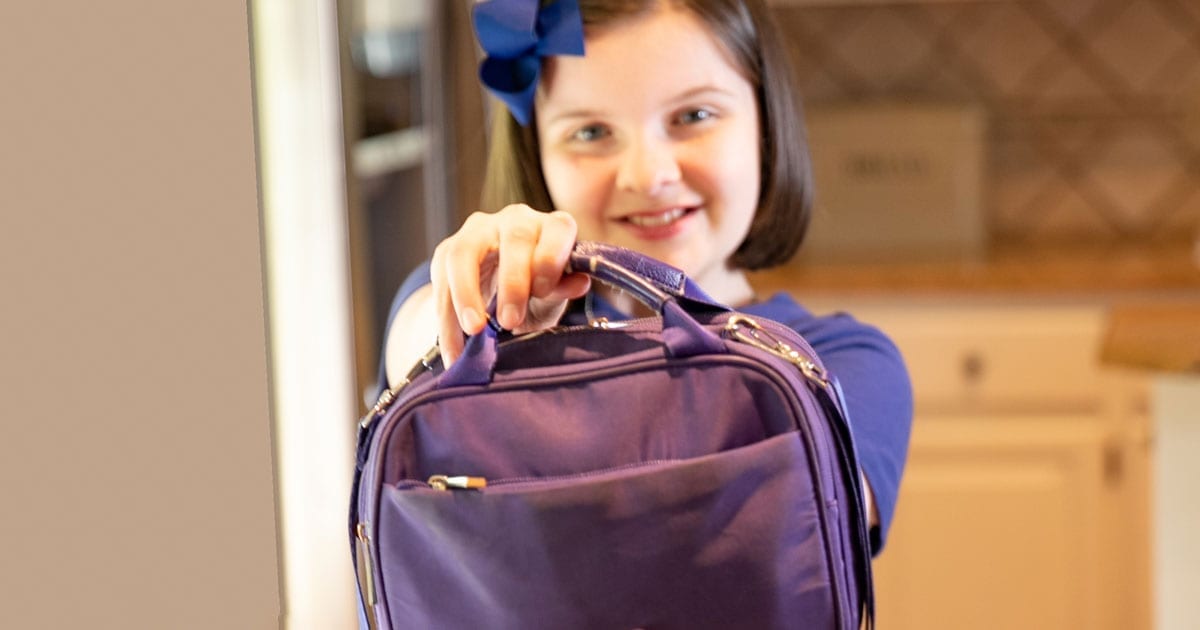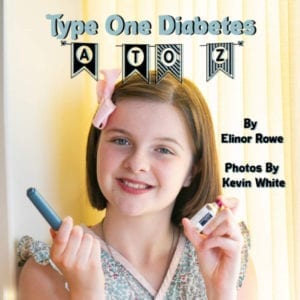
16 Oct It’s in the Bag: Carrying Diabetes Supplies
Ellie’s first diabetes bag from the hospital was camouflage—perfect for the (T1D) warrior she was becoming. With wear and tear from accompanying a vivacious 8 year old on every adventure, the bag wore down and was replaced with a new kit boasting adjustable straps, more interior space, and storage compartments designed for diabetes supplies.
There are so many stylish, practical diabetes bags on the market, but—as with most things—it’s what’s inside that counts most.
We found it less stressful to help Ellie manage her diabetes if we had everything we needed with us. We’ve added items to the kit, and we’ve used every single one of them except glucagon (typing and knocking on wood simultaneously).
Keep calm and carry on (testing supplies, pump supplies, and emergency supplies).

Testing Supplies:
- glucose meter
- lancing device
- lancet needle
- test strips
- charge cord for meter
- alcohol swabs
Pump Supplies:
- insulin vial
- infusion set
- reservoir
- battery for pump
- medical paper tape for securing a loose site (We use 3M Nexcare.)
- coin for opening compartment to change battery (We found a quarter works if you don’t want to use the removable clip on the Medtronic 670G to open the pump’s battery compartment.)
Emergency Supplies
- medical/emergency I.D.
Treating Low BG:
- glucagon injectable or mist (Baqsimi)
- fast acting carbs (We like Skittles or other candies in small snack size packets like you receive trick-or-treating at Halloween or exchanging classroom valentines.)
- small tube of frosting (never goes bad and can be rubbed into the inner cheek if, heaven forbid, you need to treat a low but have trouble swallowing)
Treating Ketones:
- keto sticks for ketone testing
- insulin pen and needles*
Miscellaneous Supplies:
- hand sanitizer
- extra mask (COVID protection)
Ellie’s diabetes kit sounds like Mary Poppins’ bottomless carpet bag; miraculously, everything fits. We are prepared for the ordinary and for the emergency that is anything but routine.
Quick Tips and Takeaways:
- Involve your child!
From the start, we included Ellie when packing the kit. This helped her develop ownership of the kit, know where items are located, and take a more active (and age appropriate) role in management.
- Mark the pocket/compartment that matters most to you.
We put a piece of decorative duct tape on the outer zipper tab for the compartment containing Ellie’s testing meter case since she accesses it most frequently.
- Store basal and bolus insulin pens in separate compartments.
When Ellie took Lantus (basal) and Humalog (bolus) insulin, we kept the pens in separate compartments so that we wouldn’t inadvertently grab the wrong one—a scary scenario. Now that Ellie uses a pump, she only uses Humalog.
- Include a BG log and pen/pencil.
Before Ellie got a continuous glucose monitor (CGM), we kept a log of her BG readings. It was helpful to spot trends so that we could adjust Ellie’s ratios. Also, when she was sick, we could quickly and easily give BG readings to the endo team over the phone without waiting to upload from the meter via PC.
*If we need to treat moderate or large ketones with a correction dose that is 10% of the total daily dose of insulin for moderate ketones and 20% of the total daily dose for large ketones, we switch from Ellie’s pump to manual injections. We don’t always have the pen in the kit, but it’s there when we travel.
We keep a supply of Humalog pens for treating moderate or large ketones in the refrigerator. Once we use a pen for an injection, we carry it in the bag. We never want to waste insulin and try our best to fill the pump’s reservoir from the pen once the clock starts ticking on the pen’s expiration (30 days from start of use/removing from the fridge).



